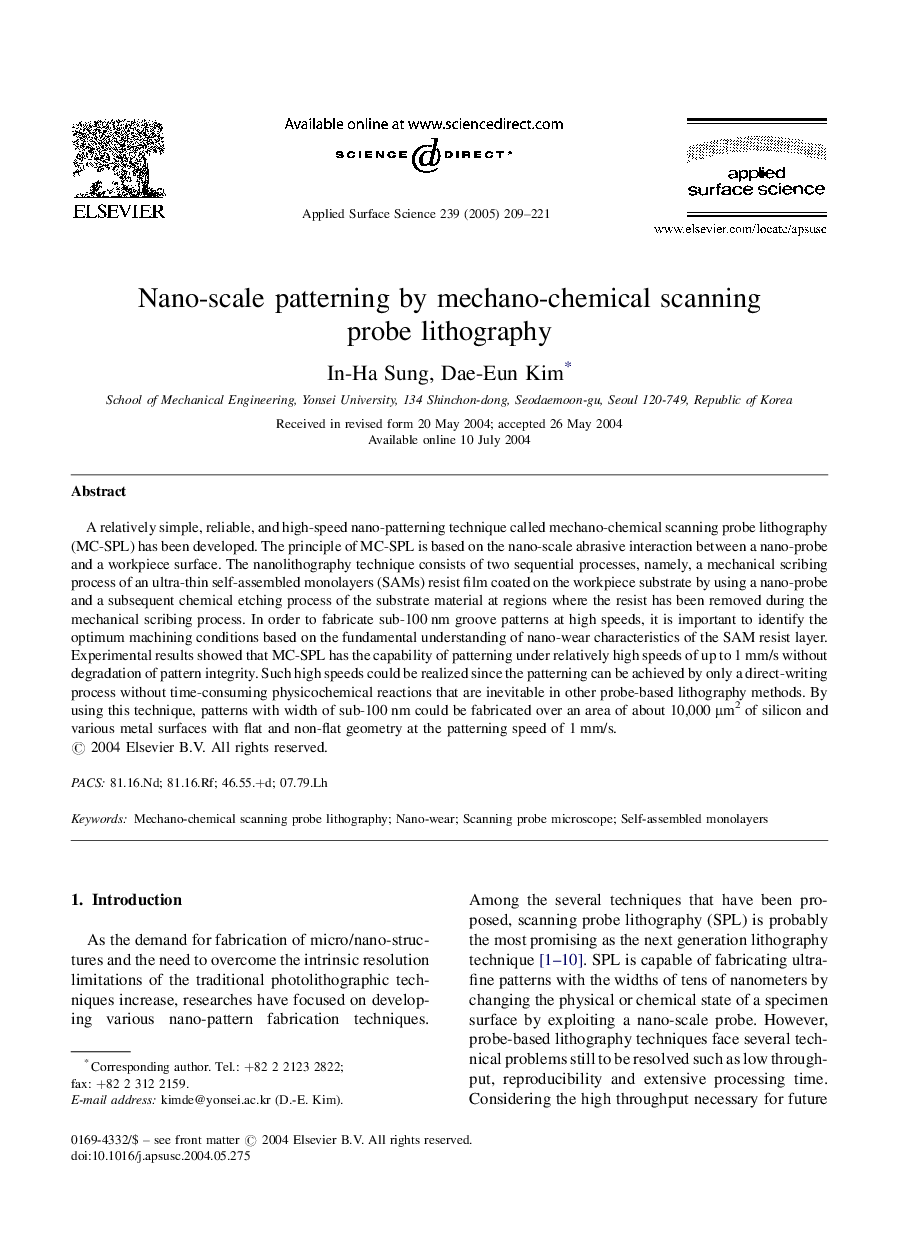| Article ID | Journal | Published Year | Pages | File Type |
|---|---|---|---|---|
| 9568834 | Applied Surface Science | 2005 | 13 Pages |
Abstract
A relatively simple, reliable, and high-speed nano-patterning technique called mechano-chemical scanning probe lithography (MC-SPL) has been developed. The principle of MC-SPL is based on the nano-scale abrasive interaction between a nano-probe and a workpiece surface. The nanolithography technique consists of two sequential processes, namely, a mechanical scribing process of an ultra-thin self-assembled monolayers (SAMs) resist film coated on the workpiece substrate by using a nano-probe and a subsequent chemical etching process of the substrate material at regions where the resist has been removed during the mechanical scribing process. In order to fabricate sub-100 nm groove patterns at high speeds, it is important to identify the optimum machining conditions based on the fundamental understanding of nano-wear characteristics of the SAM resist layer. Experimental results showed that MC-SPL has the capability of patterning under relatively high speeds of up to 1 mm/s without degradation of pattern integrity. Such high speeds could be realized since the patterning can be achieved by only a direct-writing process without time-consuming physicochemical reactions that are inevitable in other probe-based lithography methods. By using this technique, patterns with width of sub-100 nm could be fabricated over an area of about 10,000 μm2 of silicon and various metal surfaces with flat and non-flat geometry at the patterning speed of 1 mm/s.
Keywords
Related Topics
Physical Sciences and Engineering
Chemistry
Physical and Theoretical Chemistry
Authors
In-Ha Sung, Dae-Eun Kim,
